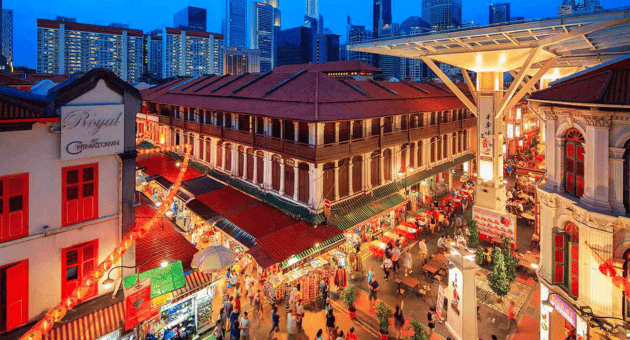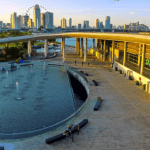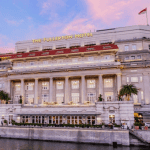Chinatown in Singapore has a rich and fascinating history that dates back to the early days of the island’s development. Here is a brief overview of the history of Chinatown in Singapore:
History of Chinatown in Singapore
Early Settlement
Chinatown’s history can be traced back to the 19th century when Chinese immigrants began arriving in Singapore, primarily from southern China, due to economic hardships and political instability in their homeland. These early Chinese immigrants settled along the banks of the Singapore River and around the Telok Ayer area, which eventually became the heart of Chinatown.
Development and Growth
Over time, the Chinese community in Singapore grew significantly, leading to the development of Chinatown as a distinct neighborhood. By the mid-19th century, Chinatown had established itself as a vibrant enclave, with Chinese temples, clan associations, and businesses catering to the needs of the Chinese community.
Cultural and Religious Diversity
Chinatown in Singapore is known for its cultural and religious diversity. It is home to various Chinese dialect groups, including Hokkien, Cantonese, Teochew, and Hainanese.
The neighborhood is adorned with ornate temples, such as the Thian Hock Keng Temple (dedicated to Mazu, the sea goddess), Sri Mariamman Temple (dedicated to the Hindu goddess Mariamman), and others.
British Colonial Influence
During the period of British colonial rule, Chinatown continued to thrive as an economic and cultural hub. It was also an essential trading center, with bustling markets and shops.
World War II and Japanese Occupation
Chinatown faced significant challenges during World War II when Singapore fell to the Japanese in 1942. The neighborhood experienced hardship and suffering during the Japanese occupation.
Post-Independence Growth:
After Singapore gained independence in 1965, the government undertook urban renewal projects to modernize the city. This included the upgrading and redevelopment of Chinatown.
Preservation and Tourism:
In the 1980s and 1990s, efforts were made to preserve the historical and cultural heritage of Chinatown. Many traditional shophouses were conserved and transformed into tourist-friendly areas with shops, eateries, and cultural attractions.
Today’s Chinatown
Today, Chinatown is a bustling and vibrant district in Singapore. It has retained much of its historical charm while also offering a blend of traditional and modern elements. The Chinatown Heritage Centre, Chinatown Heritage Trail, and numerous street markets, such as the Chinatown Night Market, make it a popular destination for tourists and locals alike. Chinatown in Singapore stands as a testament to the resilience, cultural richness, and historical significance of the Chinese community in the country. It continues to evolve while preserving its unique heritage and traditions.
Must-Visit Cultural Sites In Chinatown
When exploring Chinatown, there are several cultural sites that you do not want to miss. From temples and religious sites to museums and cultural centres, there is something for everyone to experience and enjoy.
Thian Hock Keng Temple
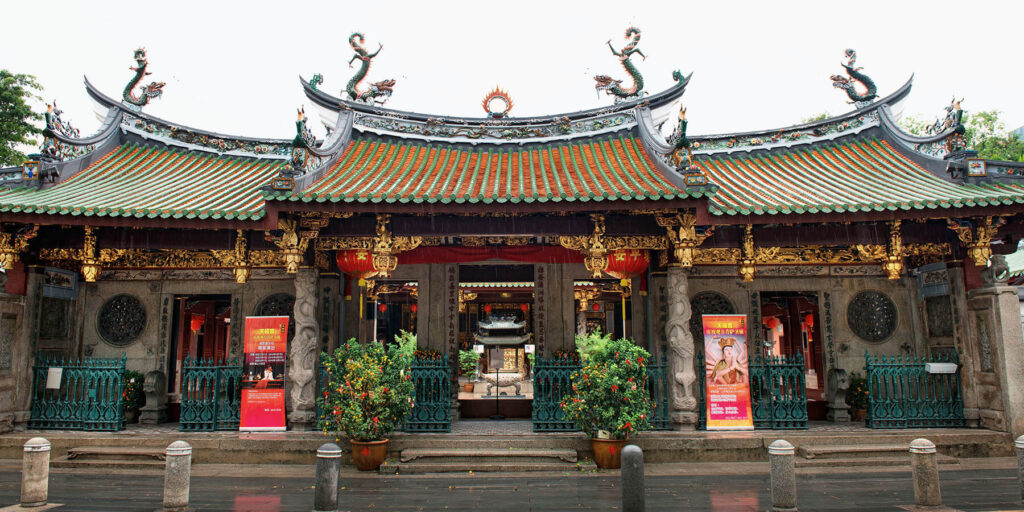
- Thian Hock Keng Temple, also known as the Temple of Heavenly Happiness, is one of Singapore’s oldest and most important Hokkien temples.
- It is an architectural masterpiece with intricate carvings, colorful tiles, and a stunning central altar dedicated to the sea goddess Mazu.
- The temple is a symbol of Singapore’s early Chinese immigrant history and their dedication to their religious beliefs.
Sri Mariamman Temple
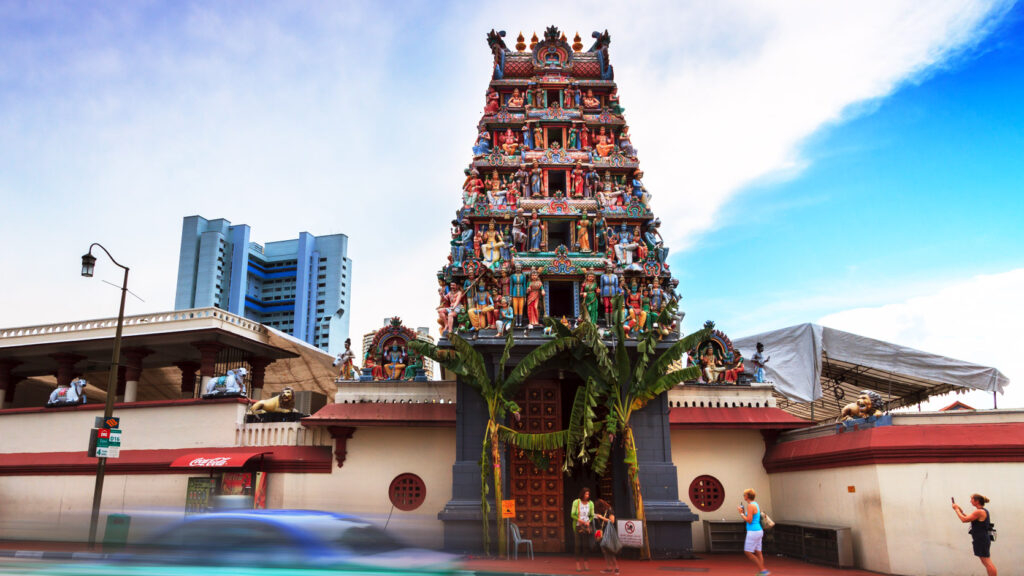
- Sri Mariamman Temple is Singapore’s oldest Hindu temple and a significant cultural landmark in Chinatown.
- The temple is dedicated to the Hindu goddess Mariamman and is known for its intricate gopuram (tower) adorned with colorful sculptures and figures.
- Visitors can explore the beautiful inner sanctum and observe various Hindu rituals and ceremonies.
Chinatown Heritage Centre
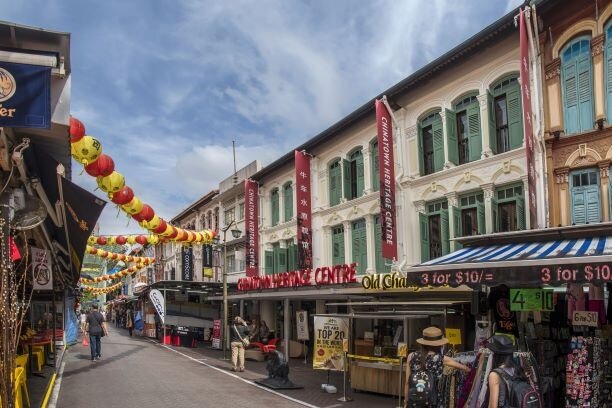
- The Chinatown Heritage Centre is a museum that provides an immersive experience into the lives of early Chinese immigrants in Singapore.
- It features meticulously recreated shophouse interiors, complete with period furnishings and artifacts, allowing visitors to step back in time and understand the challenges and aspirations of the early settlers.
Buddha Tooth Relic Temple and Museum
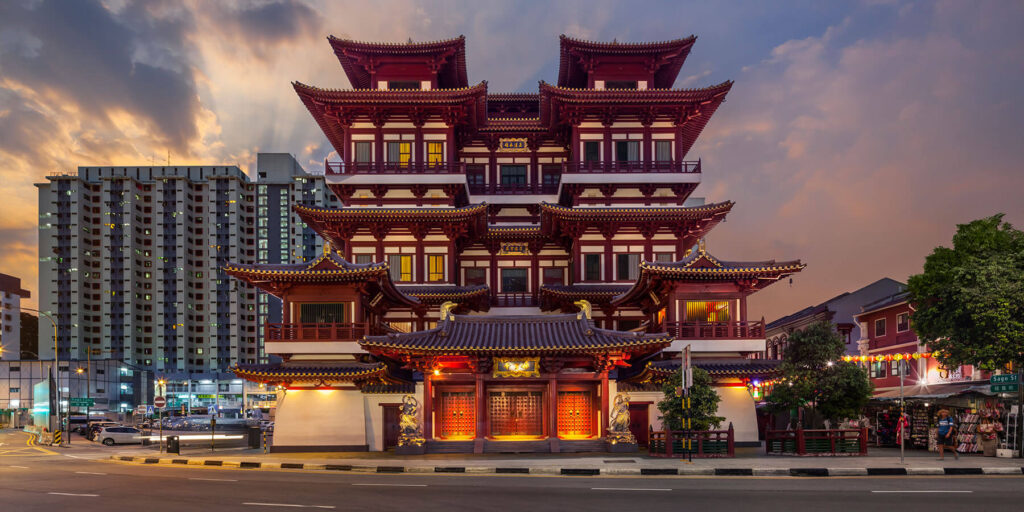
- This grand temple is a relatively new addition to Chinatown but has quickly become an iconic attraction.
- It houses a sacred relic believed to be the tooth of the Buddha, and visitors can explore the serene prayer halls and a museum displaying Buddhist art and culture.
Chinatown Street Markets
- The bustling street markets of Chinatown are themselves cultural attractions where you can experience the vibrant atmosphere of the neighborhood.
- The Chinatown Night Market, Pagoda Street, Smith Street, and Trengganu Street are known for their stalls selling traditional crafts, souvenirs, and delicious street food.
Chinatown Heritage Trail
- The Chinatown Heritage Centre offers a self-guided heritage trail that takes you through the historic streets of Chinatown.
- Along the trail, you can explore various temples, clan associations, and shophouses that tell the story of Chinatown’s evolution.
Kreta Ayer Square
- Kreta Ayer Square is a central gathering point in Chinatown and is surrounded by colorful Chinese architecture.
- It’s a great place to soak in the ambiance of Chinatown, especially during cultural festivals and events.
Chinatown Complex Food Centre
- For a taste of authentic Chinese and Singaporean cuisine, don’t miss the bustling Chinatown Complex Food Centre.
- You can savor a wide range of hawker dishes and local delicacies at affordable prices.
Exploring these cultural sites in Chinatown will not only provide insight into the neighborhood’s history but also offer a delightful cultural and culinary experience.

